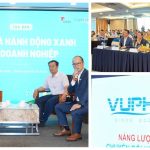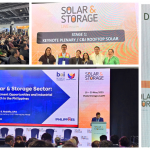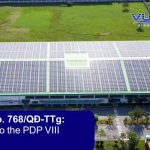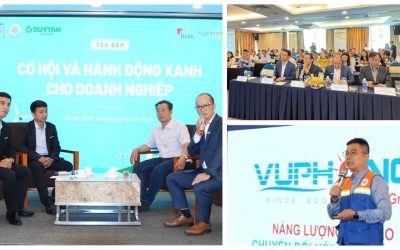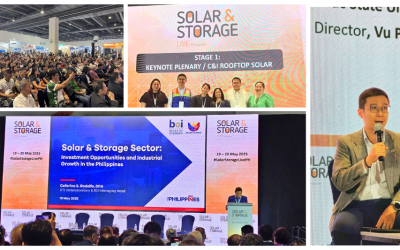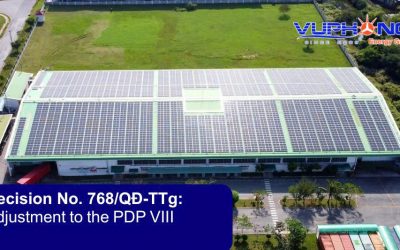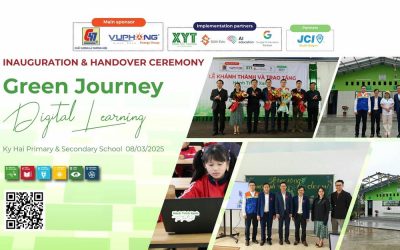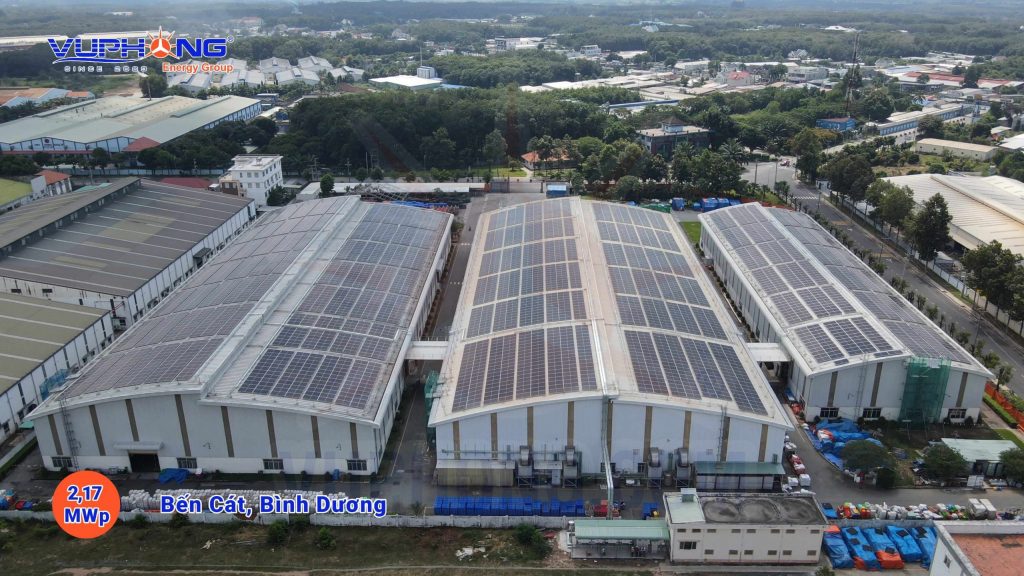
Thanks to favorable natural conditions with high solar radiation and a significant number of sunlight hours throughout the year, the Southern region of Vietnam holds immense potential for solar energy development. This clean energy source is recognized for its vital role in the region’s growth trend.
Favorable conditions for solar development in the South
Vietnam is evaluated as a country with enormous solar energy potential. According to the National Power Development Plan for the period 2021-2030, with a vision to 2050 (Power Development Plan VIII), Vietnam’s solar potential is around 963,000 MW. This includes approximately 837,400 MW for ground-mounted solar, 77,400 MW for water surface solar, and 48,200 MW for rooftop solar.
According to the solar radiation map developed by the World Bank, solar radiation intensity in Vietnam ranges from 897-2,108 kWh/m2/year, equivalent to 2.46 and 5.77 kWh/m2/day. The highest radiation intensity is concentrated in provinces of the Central Highlands and the Southern region, such as Dak Lak, Gia Lai, Nha Trang, Ninh Thuan, Binh Thuan, Tay Ninh, and Binh Phuoc.
Alongside the Central South and Central Highlands, the Southern region, including Ho Chi Minh City, enjoys the most favorable natural conditions for solar development, with sunlight hours ranging from 2,000-2,600 hours/year and substantial solar radiation. For instance, in Ho Chi Minh City, the average solar radiation reaches about 1,581 kWh/m2/year, with the highest at 6.3 kWh/m2/day. Not only is there theoretical potential, but there is also high technical potential. According to the Rooftop Solar Development Project in Ho Chi Minh City for the period 2026-2030, considering only the manufacturing enterprise sector, the potential for rooftop solar energy by 2030 is estimated at 1,589 MWp.
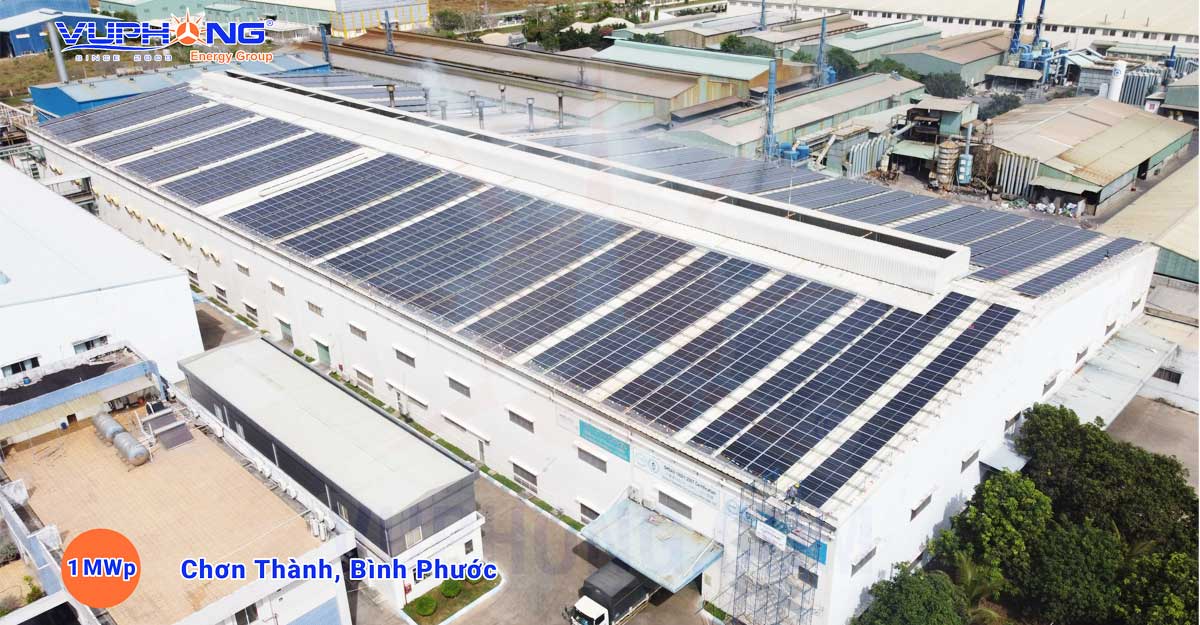 The Southern region has favorable natural conditions for developing solar power
The Southern region has favorable natural conditions for developing solar power
The development of solar energy, especially rooftop solar, holds significant importance for the growth of the Southern region. This is because the Southeast is known as the engine of economic growth, particularly with its advanced industrial clusters, accounting for 30.6% of the national total, connected by economic corridors. According to the Regional Plan for the Southeast for the period 2021-2030, with a vision to 2050, agreed upon, the chosen development scenario for the 2021-2030 period in the Southeast aims for an average growth rate of 8-9% per year. Rooftop solar, therefore, plays a crucial role in meeting the energy demand for this growth pace.
Meanwhile, in the Southwest region, many provinces such as Ben Tre, Ca Mau, have a direction towards developing renewable energy and new energy sources in their provincial plans for the period 2021-2030, with a vision to 2050. For example, in the Ca Mau Plan for the period 2021-2030, with a vision to 2050, the orientation is to make Ca Mau a seafood processing centre and a renewable energy centre in the Mekong Delta, a national renewable energy export centre. The plan encourages the development of solar power systems with a self-generating and self-consuming model.
Solar development solutions for the Southern region
During the scientific conference on “Solutions for the development of the renewable energy industry in the Southern region” organized by the Southern Institute of Social Sciences and the University of Finance – Marketing on December 21, 2023, Mr. An, Pham Dang – Deputy General Director of Vu Phong Energy Group, Director of VP Carbon, contributed some suggestions from a business perspective to develop renewable energy in the Southern region. These suggestions include important points related to green energy policies, renewable energy certificates (REC), and building partner relationships for mutual development.
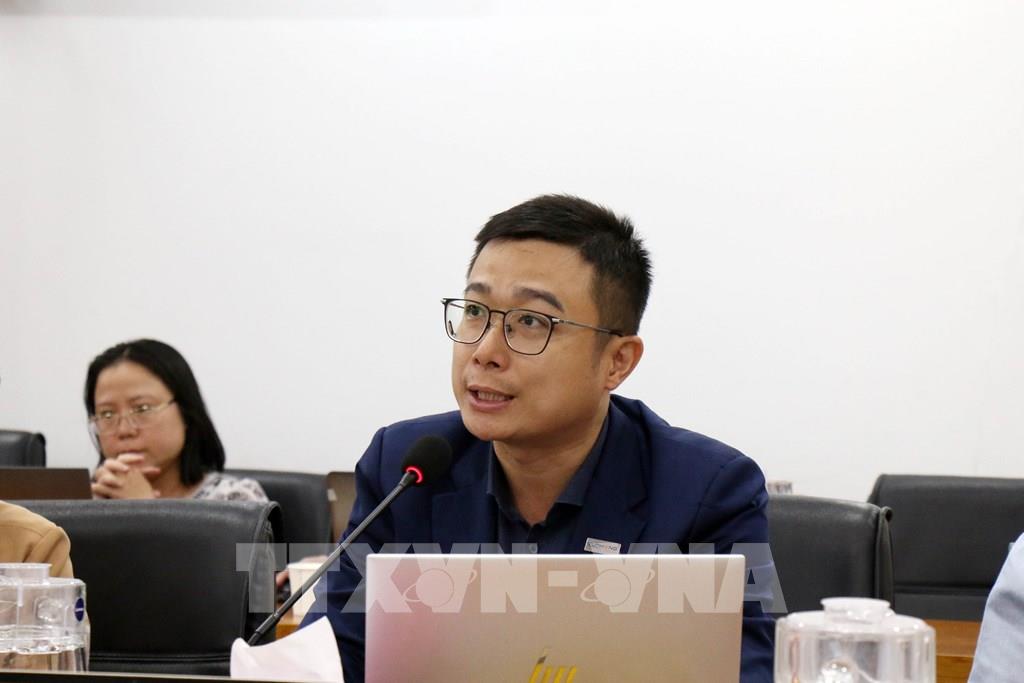 Mr. An, Pham Dang – Deputy General Director of Vu Phong Energy Group, Director of VP Carbon – shared at the conference
Mr. An, Pham Dang – Deputy General Director of Vu Phong Energy Group, Director of VP Carbon – shared at the conference
Specifically, according to Mr. An, Pham Dang, the Southern region can harness the potential of renewable energy, especially solar energy, particularly in industrial and export processing zones… Smart and sustainable industrial zones, emphasizing automation solutions, employing smart production processes, and utilizing renewable energy,… will provide businesses safety, reliability, and efficiency. Developing rooftop solar systems for self-generating and self-consuming also helps increase on-site power supply, contributing to the local power system’s capacity and reducing pressure on the transmission and distribution system.
To tap into this potential, there’s a crucial need for supportive policies encouraging businesses to use green energy and optimize energy usage efficiency, such as self-consuming solar power, encouraging and creating favorable conditions for direct power purchase agreements (DPPA) is vital. Additionally, in the global context of pushing for green transitions, collaboration among businesses to register and trade Renewable Energy Certificates (REC) not only propels the journey towards 100% renewable energy consumption but also optimizes system efficiency. Mr. An also emphasizes the role of development partnerships, such as collaborating with local entities for renewable energy research and development, establishing programs with global brands to advance cleaner and more efficient technologies….
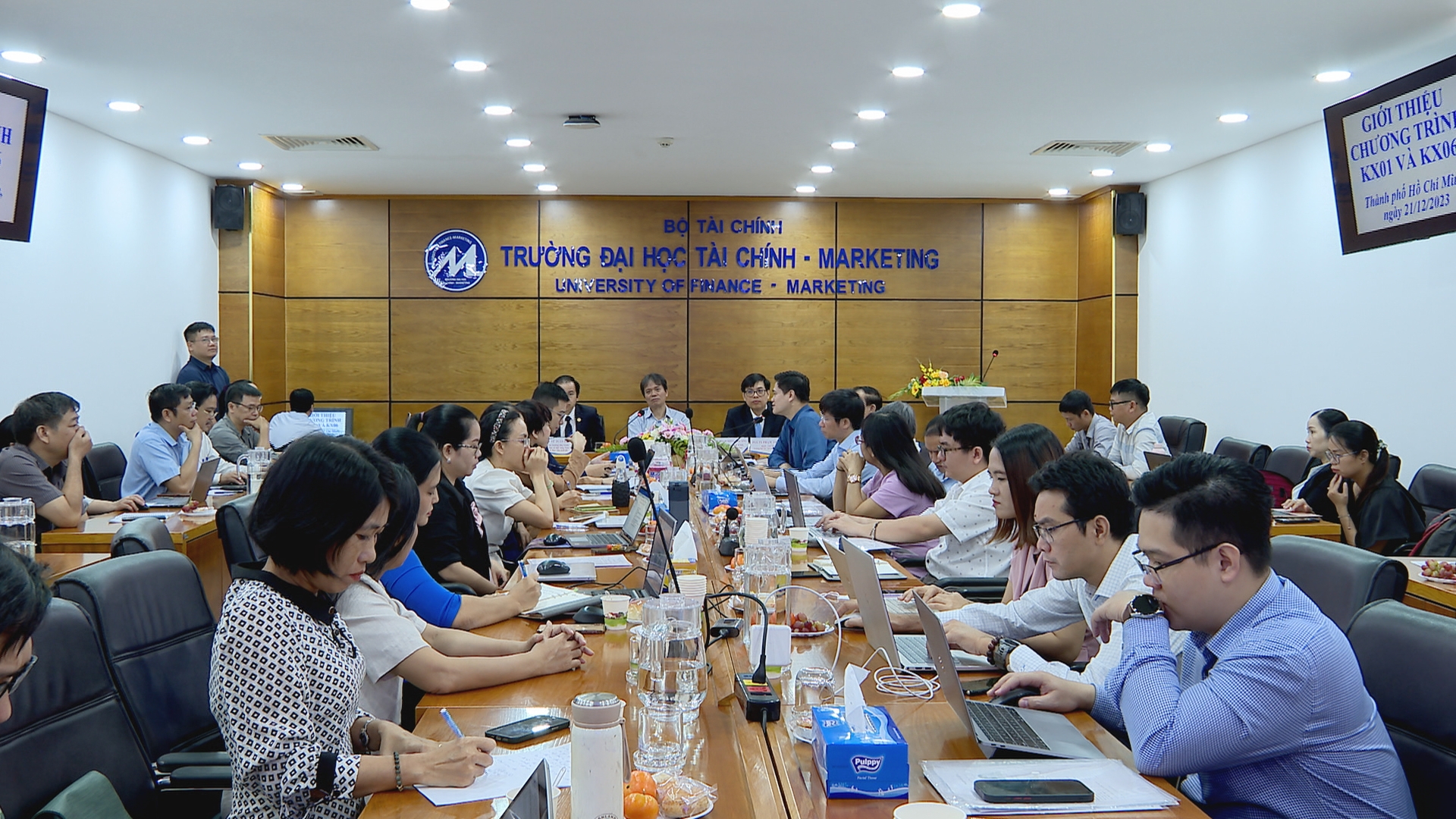 Scene of the scientific conference “Solutions for the development of the renewable energy industry in the Southern region” on December 21, 2023
Scene of the scientific conference “Solutions for the development of the renewable energy industry in the Southern region” on December 21, 2023
In the green transition trend aligning with the country’s goals for emission reduction and achieving Net Zero by 2050, especially with its crucial role as the national energy source, appropriate policy mechanisms become essential to drive renewable energy development in the Southern region. A close collaboration between the Government, businesses, and scientists is necessary to implement comprehensive and effective solutions.
Businesses interested in clean energy solutions, please contact Our Call Center via 1800 7171 or +84 9 1800 7171 or send an email to hello@vuphong.com for more information.
